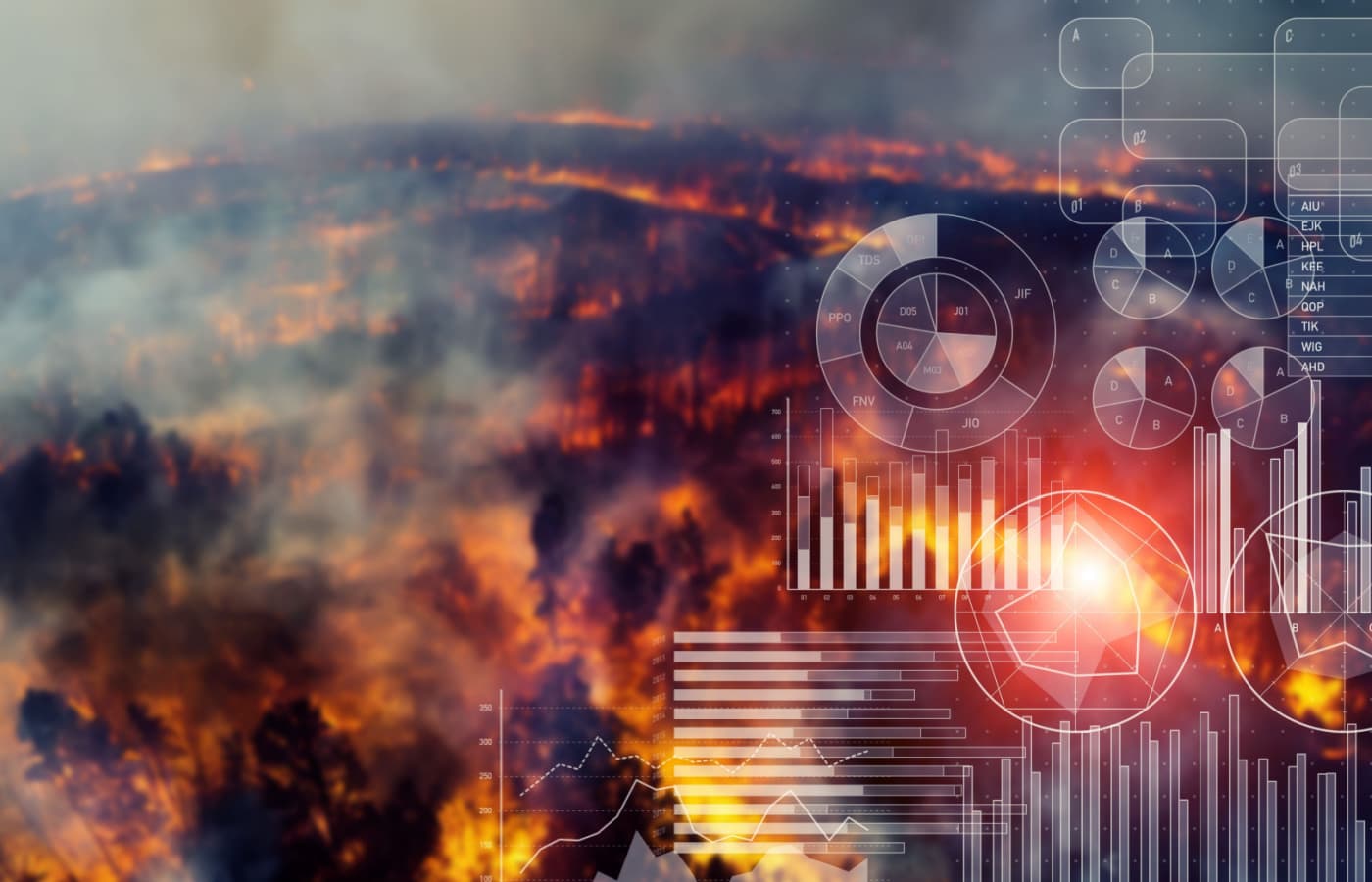Natural disasters ranging from hurricanes and earthquakes to wildfires and floods increasingly create one of the most prevailing dangers facing property owners, investors, and insurance firms. Damage costs for houses, business establishments, and infrastructure can be cataclysmic, while unpredictability makes an extra layer of risks for the owners of property. In this almost uncertain landscape, artificial intelligence seems to be a game-changing tool that will redefine how natural disasters are predicted and mitigated. AI can analyze an enormous amount of data and present patterns that a human could not even notice, delivering more accurate and proactive solutions in disaster risk management.
In this article, we’ll explore how AI is being used to predict natural disaster risks for properties, improve preparedness, and provide valuable insights for decision-making in real estate and insurance.
The Growing Importance of Disaster Risk Management
Natural disasters have always created a danger to human settlement, but the frequency and intensity of events seem to increase. Climate change is contributing to more extreme weather patterns: stronger hurricanes, more intense wildfires, rising sea levels. Besides that, urban sprawl and increasing concentrations of infrastructure in disaster-prone areas have heightened the risk to properties and communities.
These risks, on the other hand, mean huge financial losses to property owners in terms of physical damage, increased insurance premiums, reduced market value, and repair costs. However, with the increasing growth of AI and machine learning, these risks can now be better assessed and mitigated with the use of sophisticated predictive models.
This makes AI enable faster and more accurate risk assessments that help property owners, real estate investors, insurers, and governments make more informed decisions by understanding the potential hazards. Let’s dive deep into how AI is transforming disaster risk prediction for properties.
AI in Natural Disaster Prediction: How It Works
AI can analyze large volumes of real-time data, process complicated patterns, and provide predictive insights that could not have been identified by humans. The process generally follows these steps:
1. Data Collection: AI models draw data from an enormous array of sources that include historical disaster data, weather forecasts, satellite imagery, sensor networks, geological data, and even social media feeds. This data is gathered and analyzed by AI systems to identify early warning signs and assess risks.
2. Data Analysis and Modeling: The use of machine learning algorithms enables AI systems to analyze the data for patterns and trends that correlate with events of natural disasters. For instance, AI can make predictions of flooding in specific areas based on rainfall patterns, soil moisture, or any rise in river levels. Processing huge datasets, AI develops detailed risk models that predict when and where natural disasters are most likely to occur.
3. Predictive Risk Mapping: AI tools are used to provide risk maps that show those areas most susceptible to various types of natural disasters. These risk maps are created based on historical data and predictive models, which provide a clear idea for property owners and investors. Risk maps might illustrate the probability of earthquakes, hurricanes, wildfires, and other disasters in certain regions, aiding in making more informed choices regarding property investment, development, and insurance.
4. Real-Time Monitoring and Early Warning Systems: AI will also be used in association with sensor networks and satellite imagery for real-time monitoring of natural disaster risks. For instance, in the case of wildfires, AI can analyze data from satellites or drones to detect signs of a fire and predict its possible spread. Similarly, AI can be used to monitor storm conditions and provide early warnings for hurricanes or tornadoes, giving property owners time to prepare or evacuate.
How AI Helps Property Owners Predict Natural Disaster Risks
Understanding natural disaster risk is crucial for property owners when it comes to determining where to buy or build property, how to protect those investments, and how to manage insurance. The benefits AI offers can be enumerated as follows:
1. Identifying High-Risk Locations
AI-powered tools can check and analyze an extensive list of environmental factors indicating which areas are more prone to natural calamities. Taking into account historical flood data, local geography, and climate trends, for instance, machine learning algorithms can pinpoint the flood-prone areas. This is similar in the case of AI predicting land areas susceptible to wildfires based on factors such as vegetation, drought conditions, and proximity to urban areas.
AI-powered risk assessments can be used by real estate investors to decide on the purchase of properties in high-risk zones or to invest in mitigation strategies that protect their assets. The ability to identify these risks early can help prevent costly mistakes and enable more informed decision-making.
2. Enhancing Property Valuation
In the real estate market, there are usually influences on the value of properties, based on location, amenities, and condition. However, AI is starting to include disaster risk in property valuations. Properties in flood-prone areas or earthquake zones may have a reduced market value because of the increased risk of damage.
AI can appraise the disaster risk of a given property based on its location and the surroundings. By factoring these risks, AI provides more accurate house valuations, which help buyers, sellers, and investors understand the long-term value of their investments.
3. Insurance Risk Assessment
Insurance companies are increasingly using AI to assess the risk associated with insuring a particular property. Traditional risk assessments often rely on basic historical data, such as past claims and the property’s age or condition. However, AI can incorporate far more granular data, including weather patterns, seismic activity, flood risk, and even emerging climate trends.
These AI models will enable insurance companies to have better estimates of future claims and thus allow them to set more appropriate premiums. In addition, AI-driven platforms can suggest personalized disaster mitigation measures to the property owners, such as reinforcing structures against earthquakes or installing flood barriers.
4. Real-Time Disaster Monitoring and Response
AI is also enabling innovative responses to natural disasters: Property owners and emergency services will respond more quickly and effectively when a disaster strikes, using AI-powered tools. In particular, AI algorithms can analyze real-time satellite imagery and social media posts to assess the damage of an event, identify which areas have been most affected, and thus help coordinate resources for the recovery effort.
With AI, it is possible to inform homeowners how near the disaster is from them, or what roads to take when trying to evacuate the disaster. With regard to businesses, it could provide the necessary coordination response and update supply chains or infrastructure at risk.
Case Studies: AI in Action
Many companies and organizations have started to use AI in order to predict risks in natural disasters – with promising results.
1. The FloodHub Project
The FloodHub project is an AI-based flood forecasting platform that deploys machine learning algorithms in real-time flood event prediction. By analyzing weather data, river levels, and terrain information, the platform generates accurate flood risk models that help property owners, insurers, and government agencies take proactive measures. This kind of technology is important for communities living along rivers or coastlines where floods can cause extensive property damage.
2. ClimateAI and Wildfire Risk Prediction
The AI company ClimateAI uses machine learning to predict wildfire risks in California and other fire-prone regions. Their platform can pinpoint areas at risk from wildfires weeks in advance by analyzing the weather, soil moisture, and vegetation density. Property owners of such regions can use that information to prepare their property, whereas insurers can adjust their premiums according to the predicted risk.
3. AI in Earthquake Prediction
AI has also shown promise in earthquake prediction, though the technology is still in its infancy. AI systems, such as those developed by the Earthquake Engineering Research Institute, analyze patterns in seismic data to identify subtle signs that may come before an earthquake. While AI cannot predict exact earthquake occurrences, it can provide valuable early warning signals, giving property owners time to evacuate or secure their buildings.
The Future of AI in Disaster Risk Management
As AI technology advances, the more this may develop into a very good predictor of disaster risks. Hence, some likely future developments could be:
– More accurate predictive models: AI models would increase in their sophistication by incorporating additional factors such as climate change projections, urbanization patterns, and geopolitical factors.
– Integration with smart cities: AI will play a central role in the creation of “smart cities” that use real-time data to respond dynamically to disaster risks.
– Real-time mitigation: AI may also enable property owners to take immediate action to protect their homes by automatically turning on flood barriers, adjusting HVAC systems, or reinforcing structures in preparation for an impending event.
Conclusion
As natural disasters increase in frequency and intensity, AI is becoming a very important tool for the prediction, management, and mitigation of risk. AI-driven insights are allowing property owners, investors, and insurers to make better-informed decisions in light of increasing natural disasters. It improves property valuations and enhances early warning systems necessary in building a more resilient future for the real estate sector.
With AI capable of processing Big Data and churning out actionable predictions, the future of managing risks of natural disasters clearly lies at the doorstep of AI. We should, therefore, look at how far leveraging AI will go in preparing us for the worst, while we safeguard our property and investments against nature’s most unpredictable forces.












